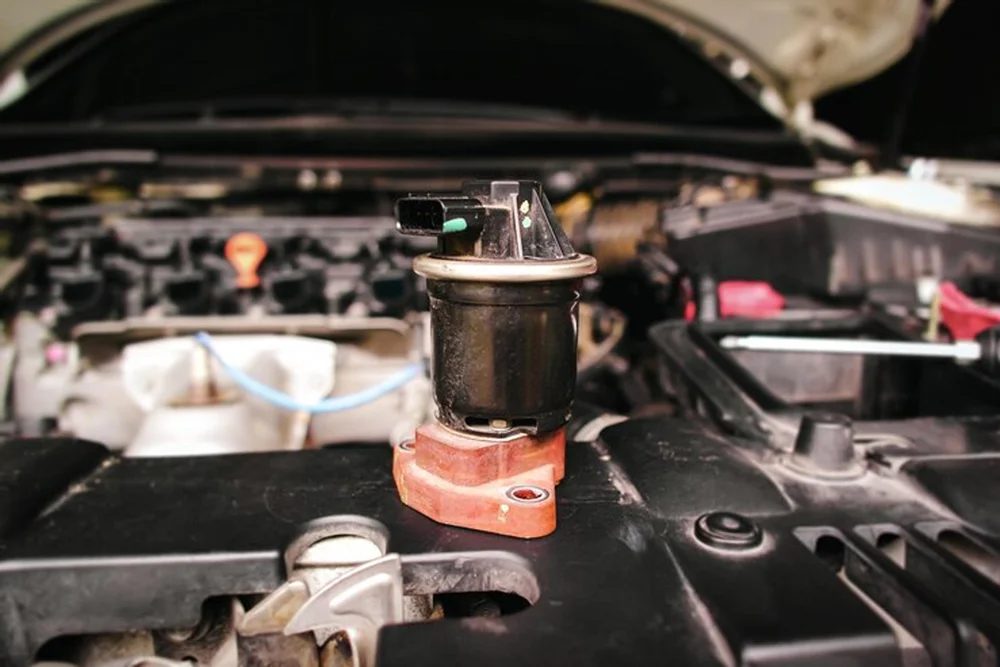Aftermarket Solutions for EGR Delete: Enhancing Vehicle Performance and Efficiency

Many vehicle owners with diesel engines consider aftermarket solutions for EGR delete. EGR delete kits can effectively remove the exhaust gas recirculation system, leading to improved engine performance and efficiency. This option appeals to those looking to enhance power and reduce potential issues related to the factory EGR setup.
As emissions standards become stricter, some drivers seek ways to bypass these regulations. The aftermarket offers various solutions that can help in this regard while addressing concerns about reliability and emissions. Understanding the benefits and drawbacks of these options is crucial for informed decision-making.
Choosing the right aftermarket EGR delete solution involves evaluating several factors, including compatibility with the specific engine and local regulations. With the right information, diesel engine owners can explore their options safely and effectively.
Understanding EGR Systems and Their Function
EGR systems play a vital role in controlling emissions and enhancing engine efficiency. They function by recirculating a portion of the exhaust gases back into the combustion chamber, helping to mitigate harmful pollutants. Check out our comprehensive article on 5 Things That Make No Sense in The Naruto Franchise for additional information.
Basics of Exhaust Gas Recirculation
The EGR system reduces nitrogen oxides (NOx) emissions. These gases are harmful and contribute to air pollution. By reintroducing exhaust gases back into the intake air, the EGR system lowers peak combustion temperatures.
This process helps to control NOx formation, making it an important part of emissions systems. Key components of the EGR system include the EGR cooler, which cools the exhaust gases before they enter the combustion chamber. This cooling is essential because hot gases can lead to engine issues like knocking and increased carbon deposits.
Impact on Engine Performance and Emissions
While EGR systems are effective at reducing emissions, they can impact engine performance. Adding exhaust gases can decrease the amount of oxygen available for combustion. This can lead to reduced engine efficiency and performance.
Drivers may notice less power and responsiveness in their vehicles. Additionally, carbon deposits may build up over time, affecting the EGR cooler and valves. Proper maintenance is essential to keep the EGR system functioning efficiently and to minimize its negative effects on engine performance.
In summary, EGR systems are crucial for controlling emissions, but they require careful management to maintain engine efficiency.
Advantages of Implementing an EGR Delete
Implementing an EGR delete can offer significant benefits for vehicle performance and efficiency. Key advantages include enhanced power and torque, improved fuel efficiency, and extended engine longevity. Enhance your understanding by reading our in-depth post on Evolution of E-Bikes.
Enhanced Power and Torque
An EGR delete often results in noticeable gains in engine power and torque. Without the EGR system, exhaust gases do not re-enter the combustion chamber. This change allows for cleaner and more efficient combustion. As a result, drivers may experience increases in horsepower and torque, enhancing overall vehicle performance.
Optimizing airflow through the engine can lead to better throttle response. Improved performance in heavy loads or during acceleration becomes more evident. Many vehicle owners appreciate these advantages, especially when towing or hauling.
Improvements in Fuel Efficiency
Another key benefit is the potential for improved fuel efficiency. With the EGR system removed, combustion becomes more efficient because only fresh air and fuel enter the combustion chamber. This leads to more complete combustion and reduces the amount of fuel wasted.
Better fuel economy can translate to lower maintenance costs over time. Drivers may find themselves refueling less often, helping them save money. Enhanced fuel efficiency contributes to a greener environment by reducing emissions from fuel consumption.
Extended Engine Longevity
An EGR delete can contribute to an extended engine lifespan. The removal of exhaust gases from the combustion process helps keep components cleaner. This may result in reduced carbon buildup on valves and pistons, improving engine lubrication.
Also, with less strain on the engine due to improved efficiency, longevity can increase. A healthier engine runs cooler, reducing wear on internal parts. As a result, vehicle owners may enjoy a longer-lasting engine with fewer repairs and lower maintenance costs.
Key Considerations in Aftermarket EGR Delete Solutions
When considering aftermarket EGR delete solutions, important factors include selecting the right kits, understanding legalities, and knowing the installation challenges. These elements all play a significant role in ensuring effectiveness and compliance.
Selecting the Right EGR Delete Kit
Choosing the correct EGR delete kit is crucial for performance and compatibility. Various kits are available, catering to different vehicle types and engine models. Key components typically include block-off plates, EGR removal tools, and instructions.
It’s essential to verify compatibility with the specific vehicle make and model. Some kits may include a DPF delete option, which can further enhance performance. Researching brands and reading user reviews helps in making an informed decision to avoid issues during installation and operation. Find valuable tips and strategies in our article about Machine Learning Solutions for Predictive Analytics.
Understanding Legal and Environmental Implications
EGR deletes may have legal and environmental consequences. Many areas enforce strict emissions standards that require vehicles to maintain specific levels of NOx emissions. Removing the EGR system can lead to non-compliance and potential fines.
Additionally, EGR removal can impact vehicle warranties and may cause vehicles to enter limp mode if not done correctly. Understanding local laws is vital before proceeding with any delete kits. Weighing the risks against performance benefits is necessary for responsible vehicle modifications.
Installation Process and Technical Challenges
Installing an EGR delete kit can be challenging and requires basic mechanical skills. The process usually involves disconnecting the EGR valve and cooling system components. Following instructions accurately is essential to avoid damaging the engine.
Users may encounter issues such as misalignments or needing additional tools. Some EGR delete kits may require tuning to optimize engine performance afterward. It is important for the installer to consider these aspects and seek professional help if necessary.
Aftermarket EGR Delete Effects on Different Engine Brands
Aftermarket EGR deletes can have distinct effects depending on the engine brand. Each engine type responds differently to the changes in exhaust systems, voltage inputs, and tuning adjustments. The following outlines how Cummins, Duramax, and Powerstroke engines are affected.
Cummins EGR Delete Impact
For Cummins engines, removing the EGR valve can lead to noticeable improvements in engine power and torque. This change often reduces carbon buildup in the combustion chamber, enhancing throttle response.
Key Effects:
- Increased Power: Users may see gains in horsepower.
- ECM Tuning Required: Effective performance needs custom ECM tuning.
- Potential Emission Issues: Without EGR, particulate matter may increase, impacting emissions.
Duramax and Powerstroke Considerations
Duramax and Powerstroke engines have unique challenges when it comes to EGR deletes. Both brands may experience improved performance, but risks are involved.
Important Points:
- EGR Valve Function: The EGR valve plays a role in reducing combustion temperatures.
- ECM Adjustments: Custom tunes are necessary to optimize performance and prevent faults.
- DPF Concerns: There’s a risk of affecting the diesel particulate filter (DPF) system, leading to higher emissions.
LLY Engine Specifics
The LLY engine, a part of the Duramax family, has specific characteristics that impact the EGR delete process.
Notable Details:
- Vulnerability to Carbon Build-Up: This engine is prone to carbon buildup, making EGR removal attractive.
- ECM Reprogramming: Special attention should be given to ECM tuning to ensure smooth operations.
- Throttle Responsiveness: Performance likely improves; however, users should monitor DPF effects closely.
These factors outline how aftermarket EGR deletes influence different engine brands, with specific attention to unique engine characteristics. You can visit showbizztoday.com for more trending posts.
